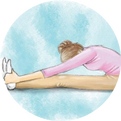
Bloodletting therapy, known as cì luò fàng xuè liáo fǎ (刺络放血疗法), is a unique acupuncture treatment method in Traditional Chinese Medicine (TCM). It is one of the most commonly used therapeutic techniques since the era of the Nei Jing (《内经》), which even considers bloodletting as the first choice for treating diseases and alleviating suffering. Depending on the patient’s specific condition, a three-edged needle or a thick, sharp needle is used to puncture certain acupuncture points or superficial blood vessels on the patient, allowing a controlled amount of blood to be released to achieve therapeutic effects.
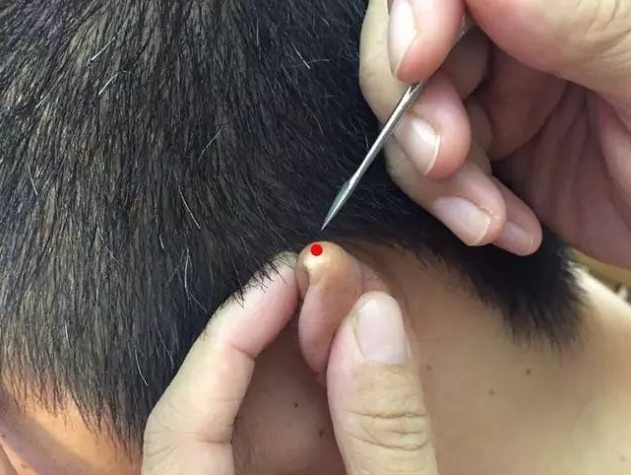
The Effects of Bloodletting Therapy: A Beneficial Bidirectional Regulation of the Blood System
Research indicates that bloodletting therapy can promote metabolism, stimulate bone marrow hematopoiesis, accelerate metabolic processes, improve microcirculation and vascular function, facilitate the elimination of harmful substances from the blood, and ensure beneficial substances are timely replenished into the bloodstream, thereby helping the body re-establish homeostasis and restore normal physiological functions. By improving microcirculation, it can also prevent excessive inflammatory responses and promote recovery from inflammation.
By analyzing the color of the blood sample, you can gain a clear understanding of your health status—what category do you belong to?
1. Dark black blood, resembling ink, indicates a long-standing illness, suggesting that blood stasis has persisted for a long time, obstructing the blood vessels.
2. Blood mixed with water indicates rheumatic disease or liver disease.
3. Blood containing jelly-like mucus suggests damp-heat accumulation and long-standing stagnation.
4. Light-colored blood indicates inflammation or an early-stage illness. Purple-red blood indicates a new injury.
5. Blood resembling wash water indicates severe chronic dampness.
6. Clear watery fluid indicates edema.
7. Presence of blisters indicates heavy dampness.
8. Foamy liquid suggests the presence of wind pathogen.
9. A large volume of blood indicates a long duration of illness.
10. A small volume of blood indicates a short duration of illness or a deeper location of the disease.
11. After cupping, if you feel a rush of warm air when reaching into the cup, it indicates heavy damp-heat.
12. Slow bleeding, even after multiple punctures, suggests qi deficiency and blood deficiency.
13. Light bleeding that does not coagulate easily indicates blood deficiency.
14. Blood that settles quickly and coagulates easily indicates qi deficiency.
Finger bloodletting, also known as xiǎo luò fàng xuè (小络放血), is generally performed near the jing points or at various extremities where small red or purple blood vessels resembling fine threads are found, puncturing to release dark blood to treat diseases.
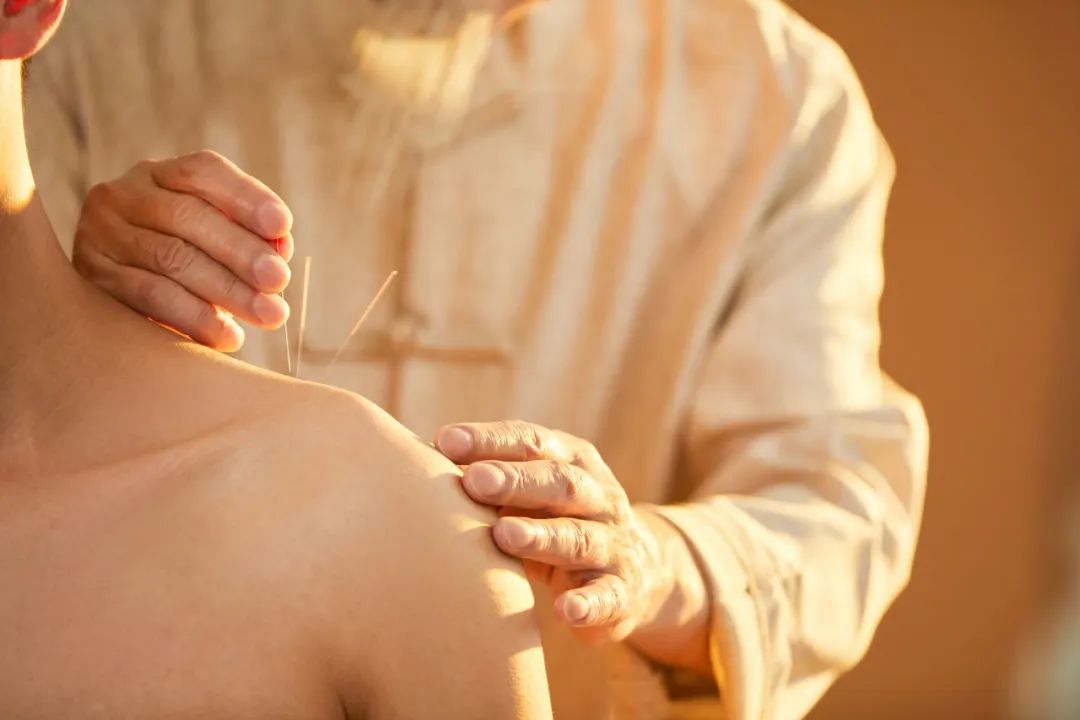
Clinical Validation: Small Bloodletting Can Resolve Various Difficult Diseases. For example:
Case 1: Anxiety
Mr. Li, 33 years old, overweight, has been under immense work pressure, feeling anxious and restless, nearly on the verge of collapse. Upon examination, stagnation was observed near the zhōng chōng (中冲) point on the dorsal side of the first segment of the middle finger, with small blue veins bulging. After puncturing, a significant amount of dark blood was released, resulting in a refreshing feeling and substantial improvement in his condition. A disposable blood collection needle can be used instead of a three-edged needle.
Case 2: Nasal Ulceration
Mr. Ji, 36 years old, has had a small ulcer in his right nostril that worsens every winter, persisting for years with unbearable pain and recurring despite various treatments. Examination revealed several small red blood vessels at the yǐn bái (隐白) and dà dūn (大敦) points on the right big toe. After puncturing, dozens of drops of dark blood were released, and the ulcer healed the next day, with no recurrence for two years.
Case 3: Oral Ulcers
Mr. Zhao, 50 years old, robust physique, busy with work and socializing, prone to heat, prefers cold and fears heat, experiences recurrent oral ulcers and hoarseness every summer. Examination revealed numerous small red blood vessels near the jiǔ yǐn (井穴) on the big toe. After several punctures, significant improvement was noted, with no obvious recurrence of heat-related ulcers in recent years. Additionally, puncturing on the back also improved his hoarseness.
Case 4: Increased Vaginal Discharge
Ms. Gou, experiencing abnormal and increased vaginal discharge, has not been cured despite various treatments. Examination revealed several prominent red blood vessels around the lì duì (厉兑) point on the second toe. After a small amount of blood was released through puncturing, symptoms improved, and after another session a week later, she was clinically cured.
Case 5: Sensitivity and Suspicion
Mr. Qian, 26 years old, suffers from nervous sensitivity and suspicion, often suspecting others of harboring ill intentions. Upon examination, a segment of a bulging blood vessel was found near the shénmén (神门) point on the upper ear. After puncturing, a large amount of stagnant blood was released, resulting in a calmer demeanor and significant improvement in his suspicion.
As the saying goes, “When the disease comes, the point should be treated; when the disease goes, the point should be hidden.” After the disease is resolved, the corresponding stasis will gradually disappear. If the disease does not resolve, puncturing can be done every three days until recovery, with bleeding stopping when fresh blood is released, as excessive bleeding is not beneficial.
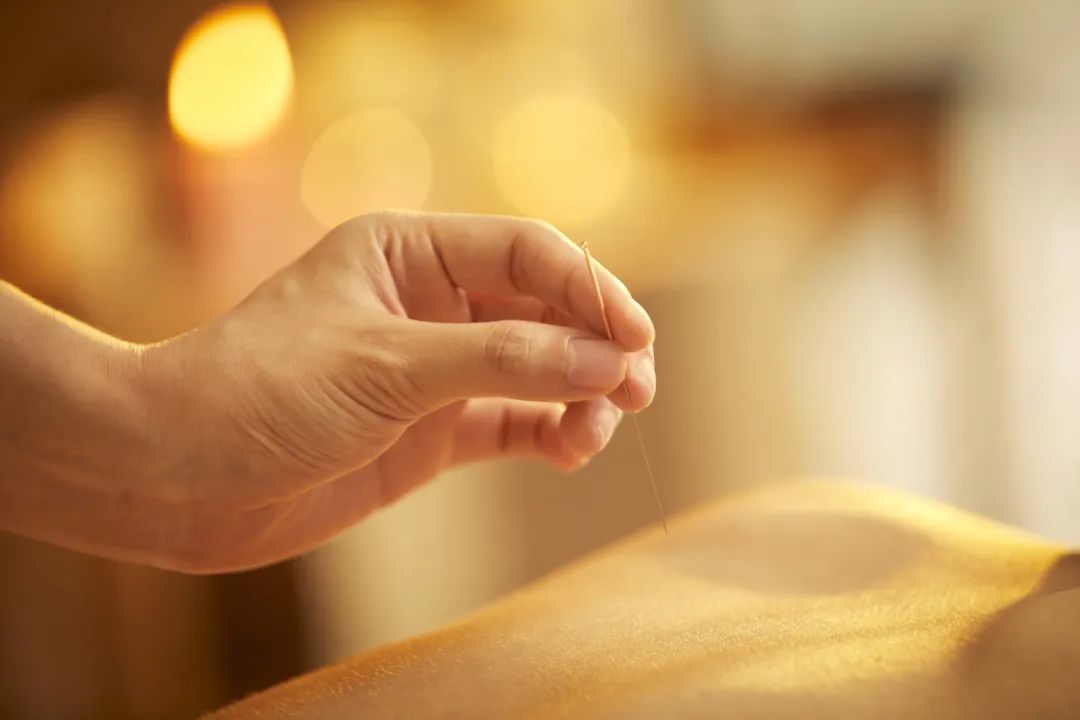
Precautions for Bloodletting:
1. Bloodletting Technique
① After identifying the blood point, quickly puncture with wrist strength, aiming for 6-9 punctures in one second.
② For prominent blood vessels, one puncture should suffice, as blood will often spurt out; be prepared to avoid splattering.
2. Reactions After Bloodletting
① 80% of patients feel relaxed and comfortable after bloodletting, while 20% may experience increased pain. Those who feel increased pain tend to heal faster than those who feel immediate relief.
② If there is no sensation after 5-10 bloodletting sessions, further bloodletting is not advisable.
3. Timing of Bloodletting
① For inflammation or acute pain, bloodletting can be done once a day; after symptoms improve, every 3-5 days.
② For chronic patients, every other day is recommended, and once improvement is noted, every 5-7 days. Bloodletting can be performed after cupping for 15-20 minutes.
4. Contraindications for Bloodletting
① Patients with significant bleeding or those prone to subcutaneous bleeding.
② Severe heart disease.
③ Patients with sexually transmitted diseases, skin diseases, or skin ulcers.
④ Pregnant women or those menstruating, and patients with leukemia should not undergo bloodletting.
⑤ Patients who are overly hungry or full, frightened, or excessively tense should not be treated.
⑥ For patients with liver disease, bloodletting should be approached with caution (as with any other treatment); avoid contact with the blood, especially on wounds, to prevent infection.
5. Treatment for “Needle Sickness”
① Immediately warm the patient’s dà zhuī (大椎) point with your palm.
② Pinch the rén zhōng (人中) and hé gǔ (合谷) points simultaneously.
③ Press the nèi guān (内关), yǒng quán (涌泉), and tài chōng (太冲) points; if possible, have the patient drink a cup of warm sugar water or glucose immediately.
④ Have the patient lie down (with their head lower than their feet).
6. Diagnosing Through Blood Analysis
① Light-colored blood indicates inflammation or an early-stage illness. Blood mixed with water indicates rheumatic disease or liver disease, while dark blood suggests a long-standing illness with blood stasis.
② If bloodletting reduces pain during the day but worsens at night, it indicates blood stasis, necessitating another puncture until relief is achieved.
These guidelines are for reference only; non-professionals should not attempt to perform these procedures.
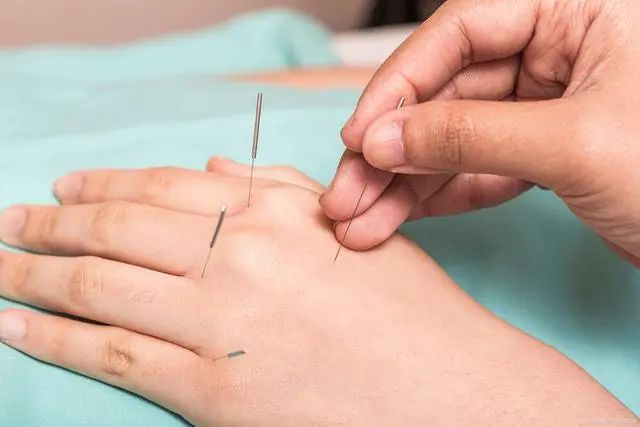
Appendix: Bloodletting Therapy for 24 Difficult Diseases
1. Cerebral Hemorrhage (Stroke):
This refers to non-traumatic bleeding caused by the rupture of blood vessels within the brain, accounting for 20%-30% of all strokes, with an acute mortality rate of 30%-40%. The causes are mainly related to cerebrovascular diseases: hyperlipidemia, diabetes, hypertension, vascular aging, smoking, etc.
Patients who bleed often become comatose; thus, puncturing the yìn táng (印堂), tài yáng (太阳), tài chōng (太冲), and all ten fingers can release 1-5 drops of blood, which may help them regain consciousness sooner and reduce the severity of hemiplegia. If a patient remains comatose for more than 24 hours, the hemiplegia rate exceeds 90%. If it exceeds 72 hours, there is a 100% chance of hemiplegic sequelae, making treatment extremely difficult. Therefore, early awakening is a priceless secret technique; once the patient regains consciousness, puncturing the dà zhuī, qū chí (曲池), and wěi zhōng (委中) points may lead to recovery.
2. Neuralgia:
For pain along the gallbladder meridian (outer thigh and calf pain), check for prominent blood vessels around the yáng líng quán (阳陵泉) and fēng lóng (丰隆) points. If present, bloodletting may lead to recovery.
3. Long-standing Boils and Abscesses:
Abscess:Red, swollen, hot, and painful, shallow and large, easily resolved if not yet pus-filled, but difficult to heal if it has formed pus. Caused by heat toxins and qi-blood stagnation.
Carbuncle:Chronic swelling without a head, unclear boundaries, little pain, difficult to resolve if not yet pus-filled, and hard to drain if it has formed pus. Caused by cold pathogens obstructing qi-blood flow.
Furuncle:Initially appears like a grain, deeply rooted and small, needle-like in shape, with a white tip and pain. Caused by pathogenic toxins invading and qi-blood stagnation.
Boil:Superficial, localized, small and round, mildly red, swollen, and painful, easily resolved, but recurrent. Caused by damp-heat accumulation.
Abscesses, carbuncles, furuncles, and boils are four types of surgical conditions that occur on the body surface. Bloodletting is performed at the xīn xī (心穴) point.
4. Conjunctivitis and Early-stage Styes:
Puncturing the tài yáng (太阳) point to release 7-9 drops of blood, and puncturing the tips of the middle toes to release 3-5 drops of blood can lead to recovery by the next day.
5. Severe Rheumatism in the Legs:
This is a group of diseases that primarily affect joints, bones, muscles, blood vessels, and related soft or connective tissues, most of which are autoimmune diseases. The onset is often insidious and slow, with a long course and a genetic tendency. Diagnosis and treatment can be challenging.
Puncturing 3 inches beside the third, fourth, and fifth thoracic vertebrae can yield significant effects; many severe cases have been cured in 1-2 sessions.
6. Gastric and Duodenal Ulcers:
These are very common diseases characterized by localized round or oval defects in the gastric or duodenal wall. Patients often experience periodic upper abdominal pain, acid reflux, and belching. This condition tends to recur and has a chronic course.
Puncturing the blue veins from the nèi tíng (内庭) to the jiě xī (解溪) points, and near the outer ankle can help. For gastric ulcers, look for blood vessels within 0.5 inches above and 2.5 inches below the tiáo kǒu (条口) point.
7. Chronic Nephritis:
This refers to a group of glomerular diseases characterized by proteinuria, hematuria, hypertension, and edema, with varying onset patterns and slow progression, potentially leading to chronic renal failure.
① Bloodletting at the rào shū (肾俞) point can resolve yellow fluid; once the yellow fluid is gone, the patient will recover.
② Around the kidneys.
③ Bloodletting around the navel (do not puncture the center of the navel).
8. Hepatitis Bloodletting:
This usually refers to liver cell damage caused by various pathogenic factors—such as viruses, bacteria, parasites, chemical toxins, drugs, alcohol, and autoimmune factors—resulting in a series of discomfort symptoms and abnormal liver function indicators.
Puncturing the yáng jiāo (阳交), zú sān lǐ (足三里), qū zé (曲泽), yáng líng quán, and sān yīn jiāo (三阴交) points.
9. Cirrhosis with Ascites:
This is a common chronic progressive liver disease caused by one or more factors leading to diffuse liver damage. In China, most cases are post-hepatitis cirrhosis, with a smaller portion being alcoholic or schistosomiasis-related cirrhosis. Late-stage complications often include upper gastrointestinal bleeding, hepatic encephalopathy, secondary infections, splenomegaly, ascites, and cancer.
Use the hepatitis points plus:the shèn yǔ (肾俞), wāi yǔ (腰俞) points, tiáo kǒu (条口) point (0.5 inches up and 0.5 inches out), and gān yǔ (肝俞) point.
10. Effective Points for Hemorrhoids:Hemorrhoids are a common condition located around the anus, which can occur at any age, but the incidence increases with age.
① The zhāo jiāo (龊交) point (located at the junction of the upper gum and upper lip) can be found by locating a white spot; 1-3 sessions can lead to recovery.
② For red, swollen, and ulcerated hemorrhoids, puncturing the wěi zhōng (委中) point can relieve pain.
11. Insomnia:
Insomnia refers to the inability to fall asleep or maintain sleep, leading to insufficient sleep. It is also known as sleep onset and maintenance disorder, caused by various factors leading to difficulty falling asleep, shallow or infrequent sleep, early awakening, and poor sleep quality, making it a common condition.
Insomnia often causes significant suffering and psychological burden for patients, and the misuse of sleeping medications can harm other aspects of health.
① Points include shénmén, xíng jiān (行间), and zú sān lǐ.
② dà zhuī, shén dào (神道), and zhōng pán (中脘) points can be punctured followed by cupping.
12. Cervical Spondylosis:
Pain points include tiān zōng (天宗), jiān zhēn (肩贞), and chǐ zé (尺泽) points.
13. Chest Internal Injuries:
Puncturing the dà zhuī, jiān jǐng (肩井), and then the injury site.
14. Shoulder Periarthritis:
Puncturing the shèn guān (肾关) point (1.5 inches below yīn líng quán), and chǐ zé point can yield immediate effects.
15. Acute and Chronic Throat Diseases:
Puncturing the dà zhuī, ěr jiān (耳尖), ěr bèi jìng mài (耳背静脉), shǎo shāng (少商), qū chí, and tài yáng points can reduce pain after bloodletting.
16. Impotence:
① Puncturing the shèn yǔ, fù liú (复溜) points, and guān yuán (关元) point, followed by cupping at the bladder yǔ (膀胱俞) point for 15 minutes.
② Puncturing the sān yīn jiāo, mìngmén (命门), and cupping at the shèn yǔ, xuè hǎi (血海) points.
17. Hypertension:
Puncturing the tài yáng, dà zhuī, ěr jiān, ěr bèi jìng mài, and qū chí points can lower blood pressure immediately; note: do not drink water within one hour after bloodletting, as it may reduce effectiveness.
18. Asthma:
Puncturing the dà zhuī, fèi yǔ (肺俞), fēngmén (风门), gāo máng (膏盲), and liè xuè (列缺) points. Cupping at the zhōng fǔ (中府) and dà zhuī points for 15 minutes.
19. Hyperlipidemia:
Puncturing the dà zhuī, tài yáng, wāi yǔ, wěi zhōng, and qū chí points.
20. Rheumatic Heart Disease:
Puncturing the yáng jiāo, chǐ zé, and tài yáng points.
21. Eyelid Growths:
Puncturing the shǎo zé (少泽), zhì yīn (至阴), ěr jiān, and dà zhuī points every other day for a ten-day course.
22. Otitis Media:
Puncturing the outer ankle joint.
23. Epilepsy:
① Puncturing the tài yáng, qū zé, wěi zhōng, and yáng jiāo points.
② Puncturing the shǎo shāng and rén zhōng points. Cupping at the gān yǔ and dà zhuī points for 15 minutes.
③ Locate pain points at the lower back of the neck and the nèi guān point, using a plum blossom needle to puncture and release blood.
24. Mental Illness:
Puncturing the tài yáng, qū zé, wěi zhōng, tài chōng, yáng jiāo, fēng lóng, and xīn yǔ (心俞) points, followed by cupping.
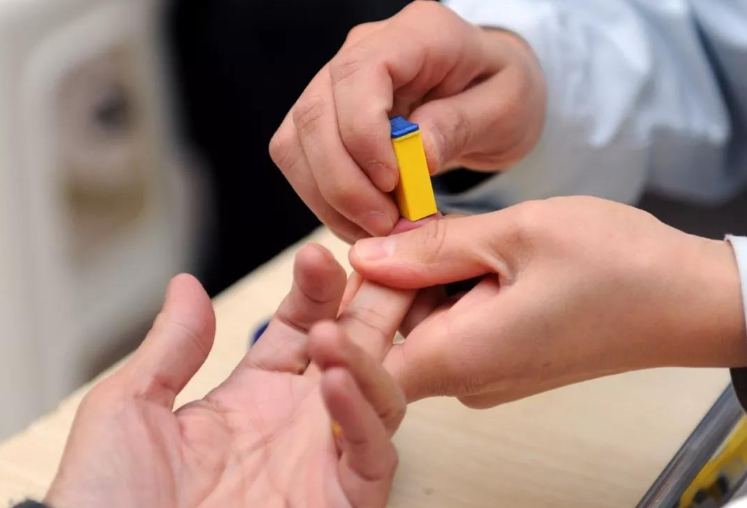
The Secret of Bloodletting:
For diseases that have not healed despite prolonged treatment, when all methods seem ineffective, bloodletting at the ankle joints, elbow joints, wrist joints, and knee joints, targeting prominent blood vessels, may yield unexpected results.
Bloodletting should generally not be performed at night; it is best done around noon. Non-professionals are prohibited from performing these procedures!
If you find this useful, please “share” it with your friends!

